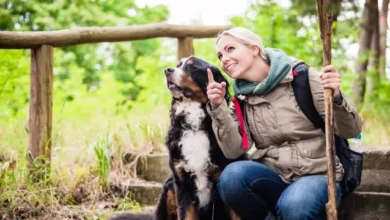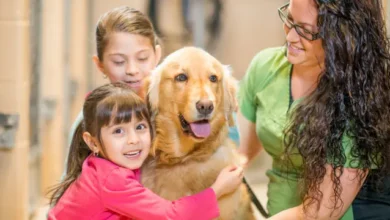
Are you thinking of welcoming a new pet into your home? Owning a pet is a big responsibility – not only will it become an important part of the family, but it can also be quite costly and time-consuming. But don’t let that worry you! Here are 6 steps to help make the process go more smoothly so that both you and your soon-to-be furry friend have nothing to dread from this exciting experience. Whether canine, feline, or something else altogether, find out how best to make room in your home and heart for a new pet today!
Making Your Home Accessible to Your Pet
Before your new pet arrives, it’s essential to make your home accessible and safe for them. This process, often known as pet-proofing, varies depending on the type of pet you’re welcoming. For example, if you’re bringing home a puppy, you’ll want to ensure that small objects and toxic plants are out of reach, cover any exposed wires to avoid chewing, and install baby gates to prevent them from wandering into dangerous areas.
You’ll also want a doggy door so they can freely come and go from the yard. Finding experts who can provide quality dog door installations to suit your pet can be worth the investment. Do some research and find one near you that can handle the task.
Pet-Proofing Your Space
After making your home accessible, the next step is to ensure that it’s safe and comfortable for your new pet. To create a pet-friendly environment, invest in snug and sturdy bedding for your pet’s comfort. Allocate an area in your home where your pet can retreat and feel secure.
Safety is paramount, so identify and remove potential hazards. For cats, secure loose cords or blinds that they might climb and accidentally pull down. For dogs, secure all garbage cans and eliminate small objects that could be choking hazards.
Remember to also safely store away all chemicals and medications. Even household items like certain fruits, chocolate, and indoor plants can be harmful to pets, so it’s crucial to be vigilant and maintain a safe environment. The key is to think like your pet and see the world from their perspective. By doing so, you’ll be creating a haven where your new family member can thrive and live without fear.
Gathering Essential Supplies
Once you’ve made your home safe and accessible for your new pet, the next step is to stock up on essential supplies. The specific items required may vary depending on the type of pet, but a general list would include food and water bowls, pet food, toys to keep them entertained, a collar and leash for walks (for dogs), and a litter box (for cats).
Consider purchasing a pet bed for their comfort, grooming tools to maintain their appearance, and a crate or kennel for secure transportation. For dogs, you might also need poop bags for walks, while cats will require litter and a scooper. Don’t forget the importance of identification – consider a tag with your pet’s name and your contact information.
As for the food, make sure you choose a diet suitable for your pet’s age, size, and health status. You might want to consult with a vet for advice on the best diet for your pet. Ensure you have enough supplies to last for at least a week so that your new pet can settle in without any major changes to their routine. Remember, these are just the essentials. As you get to know your pet, you will discover other items that will contribute to their happiness and well-being.
Introducing Your New Pet

Once you have made your home safe and gathered all the essential supplies, the next step is to introduce your new pet to their environment and your family. This process should be gradual and gentle to ensure a smooth transition. Begin by showing your pet the space you have prepared for them. This could include the specific area where they’ll sleep, eat, and play.
Introduce family members one at a time to avoid overwhelming your pet. Ensure each person approaches the pet calmly, allowing the pet to sniff and become familiar with their scent. For dogs, new smells and people can be exciting but also a bit stressful. For cats, remember they might need a bit more time to adjust, as they can be more reserved.
Help them understand their new routine – when they’ll be fed, when they’ll go for walks or play, and when it’s time to sleep. The sooner they know what to expect, the sooner they’ll feel settled.
Remember, each pet is unique and the transition can take time. Patience, compassion, and understanding are key during this period. Not only will this help your new pet adjust, but it will also begin to establish a bond of trust and love between you and your new family member.
Establishing Routines
Creating a consistent routine is paramount in ensuring your new pet feels secure and comfortable in their new home. A well-planned routine can also help to prevent potential behavioral issues.
Feeding should occur at the same time each day. For puppies and kittens, this usually means three meals per day until they reach adulthood, at which point it can be reduced to two meals. Adult dogs and cats should typically be fed twice daily, but this can vary based on breed, size, and specific health needs. Always consult with a vet to establish the best feeding schedule and diet for your pet.
Exercise is key for a pet’s physical health and mental well-being. Dogs should be walked at least once a day, but some breeds require more physical activity. Allocate time each day for play, whether it’s a game of fetch in the yard or a toy mouse chase for your cat indoors.
Training and Socialization
Setting the groundwork for good behavior from the start is crucial for a harmonious relationship with your new pet. Training should begin as soon as your pet settles into their new home. Simple commands like ‘sit’, ‘stay’, and ‘come’ can be taught to dogs from a young age. Cats, on the other hand, can be trained to use scratching posts rather than furniture.
Socialization is another integral part of pet ownership. Introducing dogs to different environments, sounds, people, and animals can help them become confident and well-behaved adults. Cats, while more independent, also benefit from exposure to various experiences.
Using positive reinforcement, like treats and praise, can make training an enjoyable experience for your pet. Remember, patience is key – learning takes time. In case of difficulties, consider seeking help from a professional trainer.
In conclusion, welcoming a new pet into your home and heart can be an excellent experience. By following the steps outlined in this article, you’ll be well-prepared to make the transition seamless for both you and your pet. With some planning, patience, understanding, and lots of love, everyone will benefit from this wonderful addition to your family.



